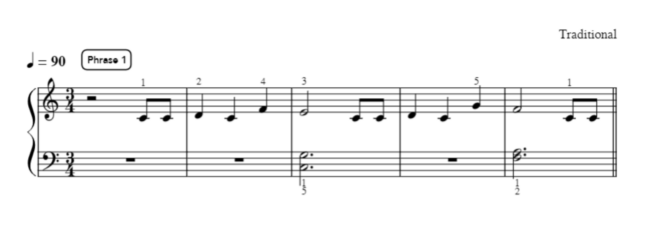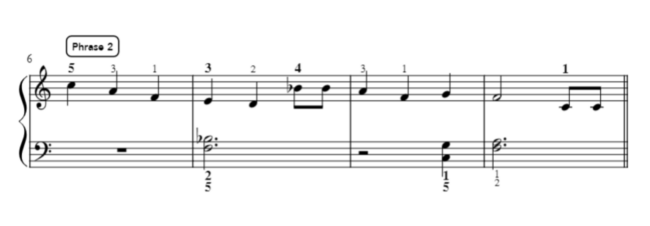How to Play Happy Birthday on Piano

Want to serenade your mates while they make a wish and blow the candles out? Here is a quick and easy guide to playing Happy Birthday on the piano.
In this mini blog post, we will break down Happy Birthday’s simple, universal melody. We will analyze the tune one phrase at a time to help you understand what it takes to play it on the piano.
Happy Birthday
This timeless tune was written in the late 19th century in the United States. We traditionally play it in the key of F major, so that is how we will learn it here. The right hand will play the melody, while the left hand will play simple power chords (chords with two notes, the root note and the fifth). The song is in 3/4, which means there are three-quarter notes per bar.
Phrase 1

The first phrase of Happy Birthday is made up of two almost identical musical sentences. The only difference is the last two notes of each sentence.
Both sentences begin on the fifth degree of the F major scale, C. You can read more about scales in Piano Lessons for Beginners.
The first sentence ends with F E–this creates tension, as E is the seventh degree of the major scale, making it a leading note to the tonic, begging for resolution. When you play the E in the melody in your right hand, you will play a C major power chord in your left hand, using fingers one and five.
The second sentence ends with G F, which creates that resolution back to the tonic at the end of the phrase. When the melody resolves to an F in your right hand, you will play an F and an A in your left hand, an F major 3rd interval.
Rhythmically, this melodic phrase uses a pattern of two eighth notes, then three-quarter notes, and then one half-note.
Phrase 2

While the first phase of the song has an ascending melodic pattern, the second one is almost entirely descending.
The first three notes of the phrase make an F major triad in reverse–C, A, and then F. But then the melody resolves to the note D while the left hand plays a Bb power chord–this chord is the fourth degree of the F major scale, creating a desire for resolution back to the tonic.
The last six notes of this phrase resolve that tension because they modify the song’s first six notes. They have the same rhythmic pattern and melodic contour but in descending order.
Practice the phrase for days!
Now that you understand the inner workings of this classic melody, you are ready to play it! Practice Happy Birthday with your local piano teacher or our online interactive app, Simply Piano.









